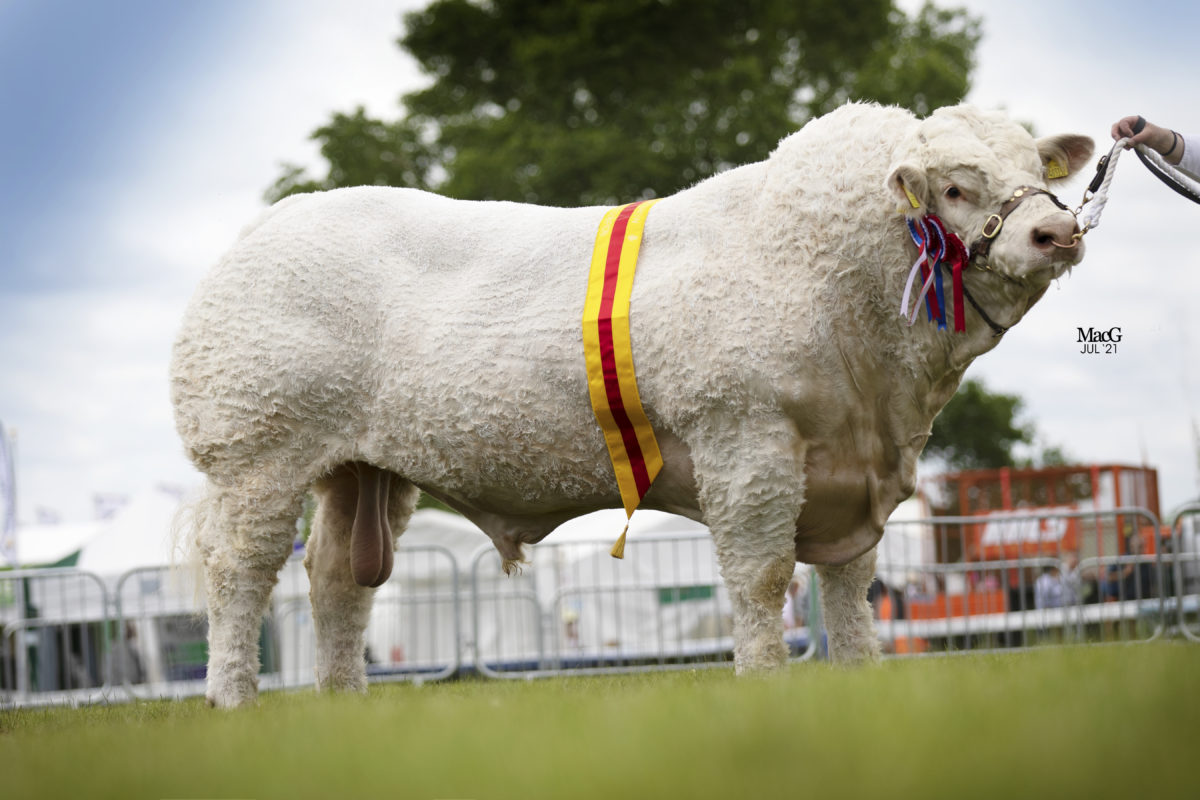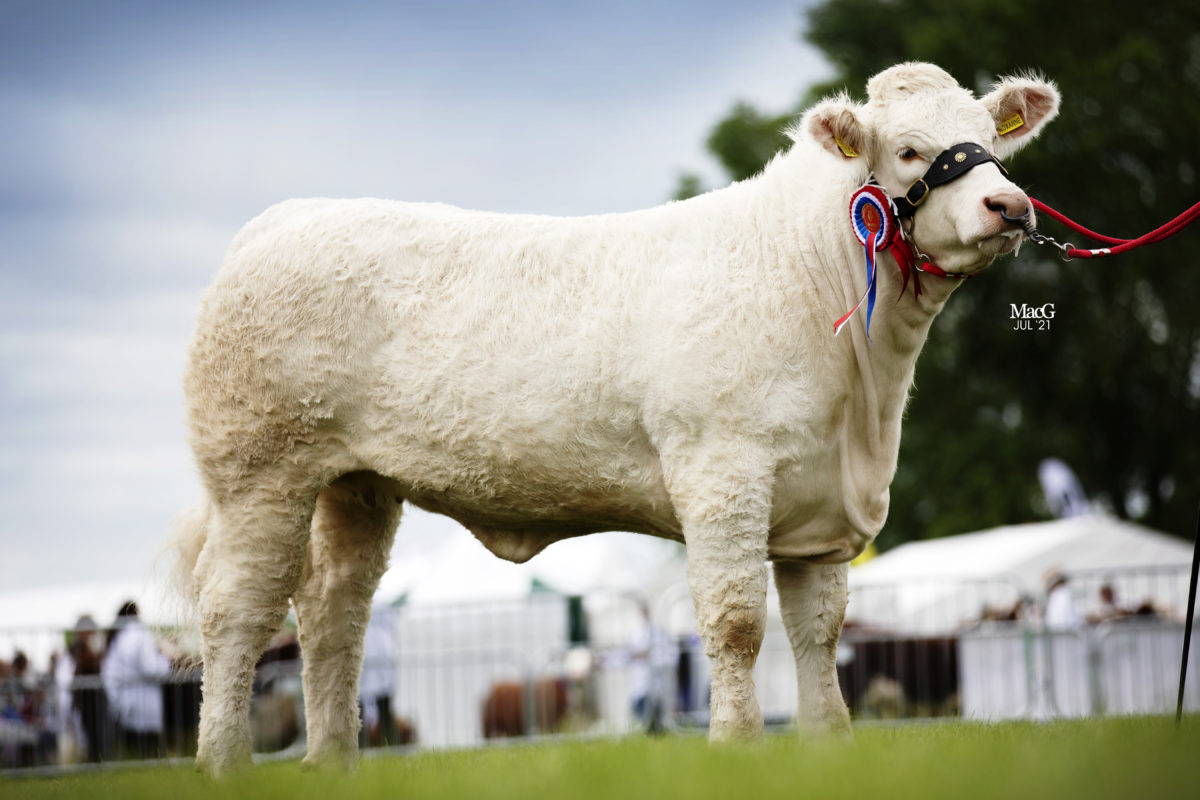Charolais is the leading terminal beef sire noted for its fast growth and excellent conformation. Charolais cattle are creamy white through to wheaten in colour. Bulls are noted for muscling, with excellent loins, good hindquarters and deep second thigh, while females are less heavily muscled and have well developed udders. Charolais stand on four strong feet and legs and should be alert.

Charolais Males
- The Charolais bull should be a well-muscled animal on good strong feet and legs to carry the heavy weights associated with the breed.
- The head should have a wide muzzle with a strong jaw placement.
- The eyes should be set reasonably wide apart.
- The ears should be big.
- The head should be sat proud on a strong muscular neck.
- The back should be long and level without dips, particularly behind the shoulder.
- There should be a good heart room and a minimum amount of brisket in the forequarter.
- The tail-setting should be set comfortably into good wide plates over the hindquarters of the bull.
- The hindquarters should also have a good depth of second thigh and should be well rounded.
- There can be two extreme types of Charolais which should be discouraged. One type would be the tall, flat sided bull which has a slack back and a poor hindquarter. This type has no place in modern day beef production (and indeed never has). The second would be the double-muscled heavy shouldered bull which invariably has associated fertility and calving problems.

Charolais Females
- The females should have a feminine appearance and should not be heavily muscled and masculine in appearance as this sort tends to be either poor or irregular breeders.
- The head should be wide muzzled with a longer rather than boxy type appearance. Like the bulls, the head should be alert.
- The back should be long and level with a good spring of rig and a minimum of brisket in the forequarter.
- The tail setting should not be dropped and preferably should be slightly raised as this is alleged to be associated with easier calving.
- The legs should be of strong flat bone on good sound feet.
- In the case of cows, the udder should be of good capacity with four well-formed teats for suckled calf production.
- The colour of Charolais cattle is generally creamy white through to a light tan colour. Broken coloured cattle are not to be encouraged although this would be of secondary importance to skeletal structure and good conformation.